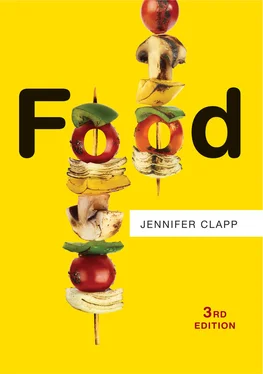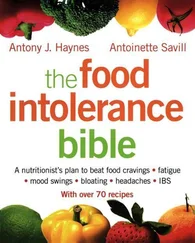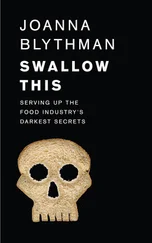As the food system has become more globalized, diets around the world have also changed. With the rise of global food trade and transnational food corporations, a growing proportion of diets are based on what are known as ultra-processed food products – foods that have multiple ingredients, and which have been processed in industrial facilities. These foods are typically energy dense with added sugars, and contain added fats, salt, emulsifiers, and preservatives. Around 50–60 percent of diets in many industrialized countries – for example, the United States, Canada, and the United Kingdom – are comprised of ultra-processed foods. Levels of ultra-processed food consumption are typically lower in less industrialized countries, although this is changing quickly with the globalization of the food system. Consumption of ultra-processed foods, such as sugar sweetened beverages and other highly processed snack foods, has risen faster in middle-income countries, such as Brazil and India, than it has in industrialized countries in recent years. Meat consumption has also been on the rise. Global average meat consumption per annum climbed from approximately 23 kg per person in 1961 to 43 kg per person by 2013. This average masks huge differences. Over that same period, China’s meat consumption per person per year rose from 4 kg to 60 kg, while Guinea’s rose from 4.5 kg to 10 kg and the United States increased its consumption from 90 kg to 115 kg. 11
Four key forces have been behind the expansion of the world food economy: (1) state-led global expansion of both the industrial agricultural model and transnational food trade; (2) agricultural trade liberalization; (3) the rise of transnational corporate actors in all aspects of the food and agricultural sector; and (4) the intensification of the financialization of food, which has resulted in food commodities becoming increasingly like any other financial product bought and sold by investors. Each of these forces, shown in Figure 1.1, has contributed to greater distancing in the food system. New middle spaces opened up by these forces have created opportunities for powerful actors to gain influence over the norms, practices, and governance processes that shape the world food economy. These forces, and the middle spaces they have opened up, will be discussed in more detail in the various chapters of this book. A brief overview is provided below.
State-led industrial agriculture and international market expansion
Industrialized country governments set the stage for the globalization of the world food economy by actively engaging in shaping agricultural development over the past century. Through national agricultural policies that had a global impact, these wealthy states promoted the adoption of an industrial agricultural model and encouraged production with farm subsidies and other forms of support. It was through these policies that rich country governments laid the groundwork for an intensification of international agricultural trade. The widespread adoption of large-scale industrial agricultural production generated food surpluses in a number of industrialized countries, particularly the United States, Canada, and Australia, which by the 1950s had become significant enough that they posed an economic problem due to the high cost of storage. The donation of those surpluses in the form of food aid dominated agricultural trade and aid in the 1950s–1960s, as surplus countries sought to dispose of their unwanted grain in a bid to support their domestic farm sectors and to develop new export markets.

Figure 1.1Major Forces in the Dominant Food System in the Past Century
By the 1960s, these same rich countries – along with the support and encouragement of private foundations and international development agencies – also sought to export industrial agricultural production methods. The export of the agroindustrial model to developing countries is often referred to as the “Green Revolution.” Intensive agricultural development assistance dominated international aid programs in the 1960s–1970s and promoted the development and dissemination of new seeds and other agricultural inputs necessary for the installation of an industrial agricultural model on a global scale.
The increased dominance and spread of the industrial agricultural production model, and the creation of new patterns of international agricultural trade and development assistance, opened up new arenas of governance in the world food economy. The same actors that were driving these trends – rich country governments, international development agencies, agrifood TNCs, and private foundations – shaped these middle spaces. Despite the crises in the world food economy that emerged in the 1970s – soaring food prices and ecological fallout from the spread of industrial modes of agriculture – this type of farming and participation in global markets have become the dominant norms, especially for international agricultural assistance.
Uneven liberalization of agricultural trade
Most governments have long protected agriculture for national security reasons, but recent decades have seen growing moves to liberalize trade and investment in this sector. In the 1980s, many developing countries were strongly encouraged to liberalize their agricultural markets under structural adjustment programs (SAPs) imposed by the International Monetary Fund (IMF) and the World Bank. Indeed, in many cases heavily indebted developing countries had little choice but to open up their agricultural trade policies under these programs, in particular to lower tariffs on imports. The widespread adoption of these policies across the developing world represented a new governance space where the rules for imports and exports in food and agriculture were set by international development agencies.
Liberalization of agricultural trade has been slower and more fitful for the rich industrialized countries. The cost for these countries of subsidizing their farm sectors had become untenable in the 1980s, leading to calls for global rules to lock in agricultural trade liberalization, including a reduction in farm subsidies. Agricultural trade had previously been exempt from international trade rules, but this changed with the 1994 Uruguay Round of trade talks which included the Agreement on Agriculture (AoA) under the World Trade Organization (WTO). As yet another new agricultural governance arena, the WTO’s AoA has had enormous influence on agricultural trade outcomes. The agreement sought to liberalize agricultural trade by encouraging a reduction in farm subsidies in rich countries – including domestic support and export promotion subsidies – in return for further opening of markets in developing countries. This agreement made some steps toward liberalization in rich countries, but it ultimately resulted in an uneven playing field that disadvantaged developing countries while maintaining significant sums of rich world subsidies.
The Doha Round of trade talks, launched in 2001, initially sought to correct the biases built into the Agreement on Agriculture. But the talks did not result in any substantive agreement, and were eventually abandoned due to deep differences among rich countries and between rich and poor countries over both subsidy levels and special treatment for developing countries. The food crisis of 2007–2008 led many countries to question their reliance on global food markets. Recent trade tensions between the United States and China have also affected global food trade patterns, leading to what many see as an abandonment of the post-war liberal trading order. In this context, a number of countries have increased their interest in promoting food self-sufficiency in the face of what they see as unfair agricultural trade rules and practices.
Читать дальше













